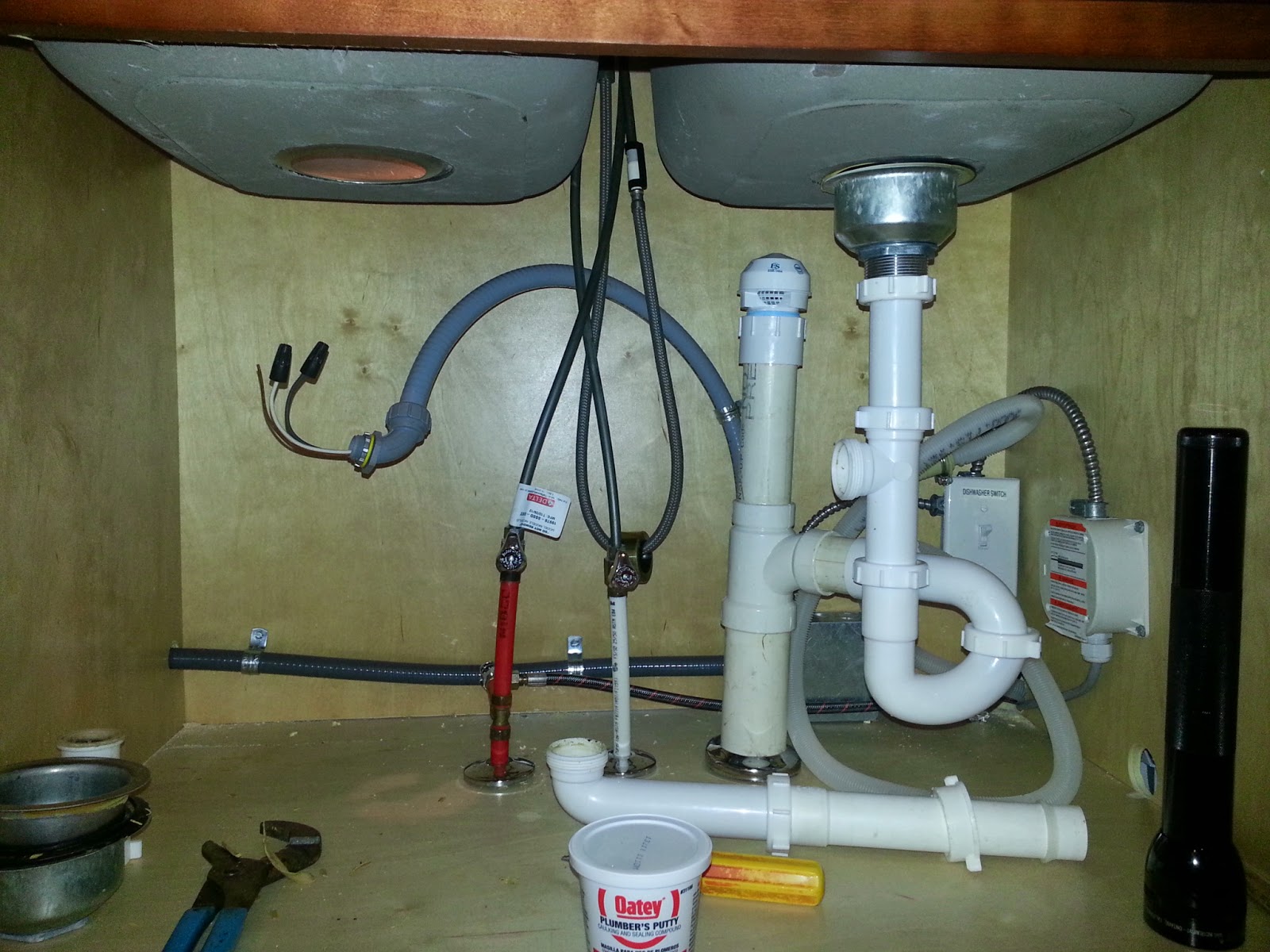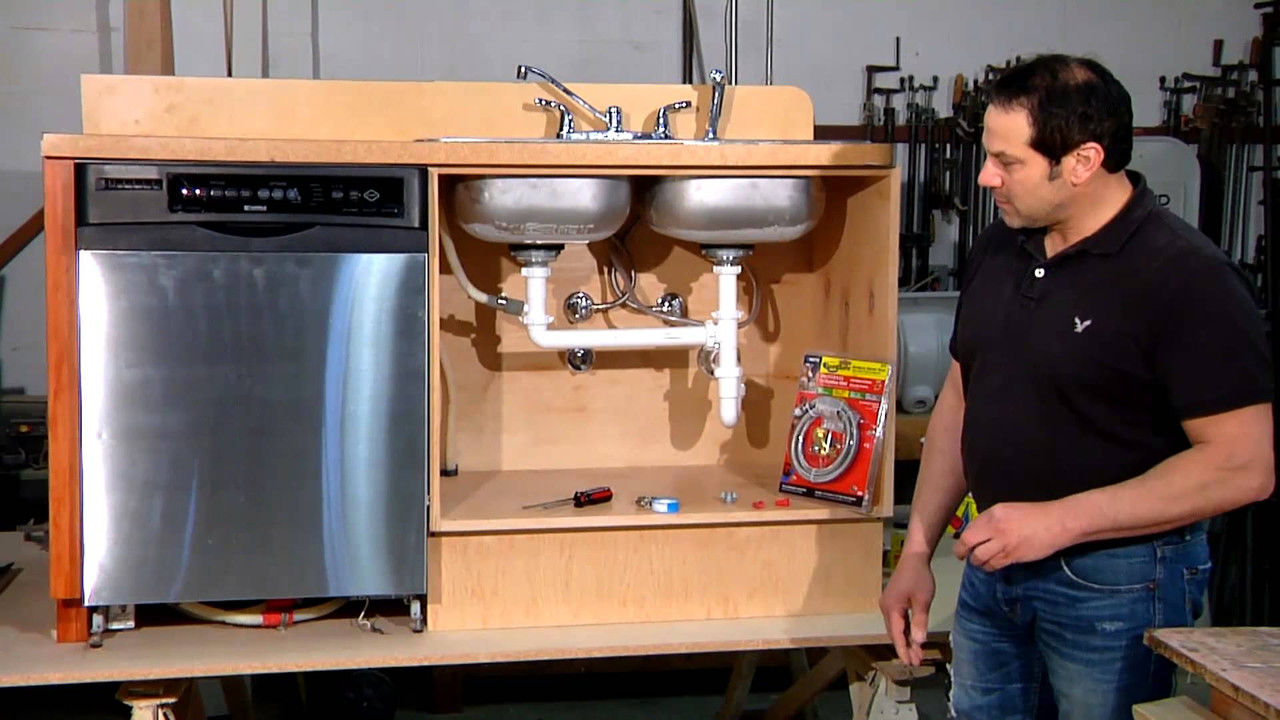Plumbing dishwasher installation is a task that requires careful planning and execution. This comprehensive guide will provide you with all the information you need to ensure a successful installation, from choosing the right plumbing fixtures to troubleshooting common problems.
Whether you’re a seasoned DIYer or a complete novice, this guide will provide you with the knowledge and confidence you need to get the job done right.
Plumbing Considerations

Proper plumbing connections are crucial for a successful dishwasher installation. By ensuring that the water supply and drain lines are correctly connected, you can prevent leaks, water damage, and other issues.
When selecting plumbing fixtures and materials, consider the following tips:
- Use flexible supply lines to connect the dishwasher to the water supply. These lines are easier to install and less likely to leak than rigid pipes.
- Install a shut-off valve on the water supply line so that you can easily turn off the water to the dishwasher if necessary.
- Use a drain hose that is long enough to reach the drainpipe without kinking or crimping.
- Make sure that the drainpipe is properly vented to prevent water from backing up into the dishwasher.
Common Plumbing Issues
Some common plumbing issues that can arise during dishwasher installation include:
- Leaks:Leaks can occur at any point in the plumbing system, including the water supply lines, drain hose, or dishwasher itself. To troubleshoot a leak, first check the connections to make sure they are tight. If the leak persists, you may need to replace the faulty component.
- Clogs:Clogs can occur in the drain hose or drainpipe, preventing water from draining properly. To troubleshoot a clog, first try to remove the clog by running a drain snake through the drain hose or drainpipe. If the clog persists, you may need to call a plumber.
- Water hammer:Water hammer is a loud banging noise that can occur when the water supply is turned on or off quickly. To prevent water hammer, install a water hammer arrestor on the water supply line.
Electrical Requirements

Installing a dishwasher requires proper electrical wiring to ensure safe and efficient operation. Understanding the electrical requirements and following best practices are crucial for a successful installation.
Dishwashers typically require a dedicated 120-volt electrical circuit with a minimum amperage rating of 15 amps. The circuit should be protected by a circuit breaker or fuse of the appropriate amperage.
Wiring the Dishwasher, Plumbing dishwasher installation
Wiring the dishwasher to the electrical panel involves connecting the dishwasher’s power cord to a dedicated circuit. The power cord typically has three wires: black (hot), white (neutral), and green or bare copper (ground).
- Turn off the power to the circuit at the electrical panel.
- Connect the black wire from the dishwasher to the black wire in the circuit box.
- Connect the white wire from the dishwasher to the white wire in the circuit box.
- Connect the green or bare copper wire from the dishwasher to the ground wire in the circuit box.
- Tighten all connections securely.
- Turn on the power to the circuit at the electrical panel.
Importance of Using a Licensed Electrician
Electrical work can be dangerous if not performed correctly. It is highly recommended to hire a licensed electrician to handle the electrical aspects of dishwasher installation. A licensed electrician has the necessary knowledge, skills, and experience to ensure a safe and code-compliant installation.
Installation Procedures
Installing a dishwasher requires careful preparation and execution. This section provides a comprehensive guide to the step-by-step process, ensuring a successful and efficient installation.
Removing the Old Dishwasher
- Turn off the water supply to the dishwasher.
- Disconnect the drain hose from the garbage disposal or drainpipe.
- Unplug the dishwasher from the electrical outlet.
- Remove the screws that secure the dishwasher to the countertop and cabinets.
- Carefully pull the dishwasher out of its space.
Connecting the Plumbing
Proper plumbing connections are crucial for a functioning dishwasher. Ensure that all connections are secure and watertight.
- Connect the water supply line to the dishwasher’s inlet valve.
- Attach the drain hose to the garbage disposal or drainpipe.
- Turn on the water supply and check for leaks.
Connecting the Electrical
Electrical connections should be performed by a qualified electrician to ensure safety. Improper connections can lead to electrical hazards.
- Connect the dishwasher to a dedicated electrical circuit.
- Use the appropriate wire gauge and type for the electrical connection.
- Secure the electrical connections with wire nuts and electrical tape.
Securing the Dishwasher
Once the plumbing and electrical connections are complete, the dishwasher needs to be secured in place.
- Slide the dishwasher back into its space.
- Level the dishwasher using a level and adjust the leveling legs as necessary.
- Secure the dishwasher to the countertop and cabinets with screws.
Leveling and Drainage
Proper leveling is essential for the dishwasher to function correctly and drain efficiently.
- Use a level to ensure that the dishwasher is level from side to side and front to back.
- Adjust the leveling legs to achieve the desired level.
- Check the drain hose to ensure it is not kinked or obstructed.
Specialized Tools and Equipment
Certain specialized tools and equipment can make the dishwasher installation process easier and more efficient.
- Level: For leveling the dishwasher.
- Adjustable wrench: For tightening and loosening plumbing connections.
- Screwdriver: For securing the dishwasher to the countertop and cabinets.
- Pliers: For cutting and bending wires.
- Flashlight: For inspecting dark areas and checking for leaks.
Troubleshooting Common Issues
:max_bytes(150000):strip_icc()/dishwasher-drain-hose-connections-2718613-09-3f63c303030749e9985b75df021aeeb6.jpg)
After installing your dishwasher, you may encounter some common issues. Here are some troubleshooting tips to help you diagnose and resolve these problems.
Leaks
If your dishwasher is leaking, check the following:
- The door seal: Make sure the door seal is properly seated and not torn or damaged.
- The water supply lines: Inspect the water supply lines for leaks or damage.
- The drain hose: Ensure the drain hose is properly connected and not kinked or blocked.
If you cannot find the source of the leak, call a professional plumber.
Noise
If your dishwasher is making excessive noise, check the following:
- The spray arms: Make sure the spray arms are not hitting any dishes or utensils.
- The pump: The pump may be making noise if it is clogged or damaged.
- The motor: The motor may be making noise if it is worn or damaged.
If you cannot resolve the noise issue, call an appliance repair technician.
Drainage Issues
If your dishwasher is not draining properly, check the following:
- The drain hose: Make sure the drain hose is not kinked or blocked.
- The drain pump: The drain pump may be clogged or damaged.
- The air gap: Ensure the air gap is properly installed and not blocked.
If you cannot resolve the drainage issue, call a professional plumber.
Concluding Remarks: Plumbing Dishwasher Installation

With the right preparation and attention to detail, you can successfully install your dishwasher and enjoy years of trouble-free operation. So what are you waiting for? Get started today!
